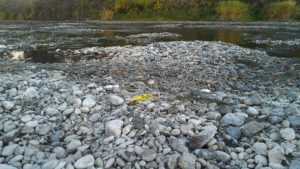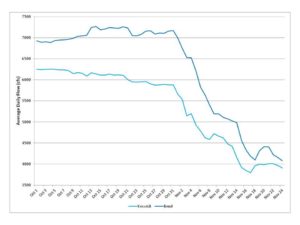
In 2011 and 2012, twenty million salmon eggs were left dewatered to rot when the flows from Shasta were cut following the fall-run spawn. In recent years, the Bureau of Reclamation has made substantial flow-cuts from Shasta/Keswick Dam after the fall run fish have spawned along the edges of the river. The flow cuts leave the eggs high and dry. The Upper Sacramento River has been the primary spawning area for the fall-run for decades. The fall-run can never be recovered with these kind of practices.
In the spring of 2013, the Bureau of Reclamation acted to get these flows smoothed for the fall-run. A cooperative agreement was reached with the Glenn Colusa Irrigation District and Reclamation District 108 to move part of their diversions into November and December. That project was not implemented because 29 winter-run redds were still in the gravel when the implementation date came and flows were kept high until these eggs hatched.
In 2014 and 2015 these conditions still prevailed. Changes to smooth these flows to avoid these problems for the fall-run fish are urgently needed. The populations of the fall-run fish continue to seriously decline and this is a major part of the reason in some years.

